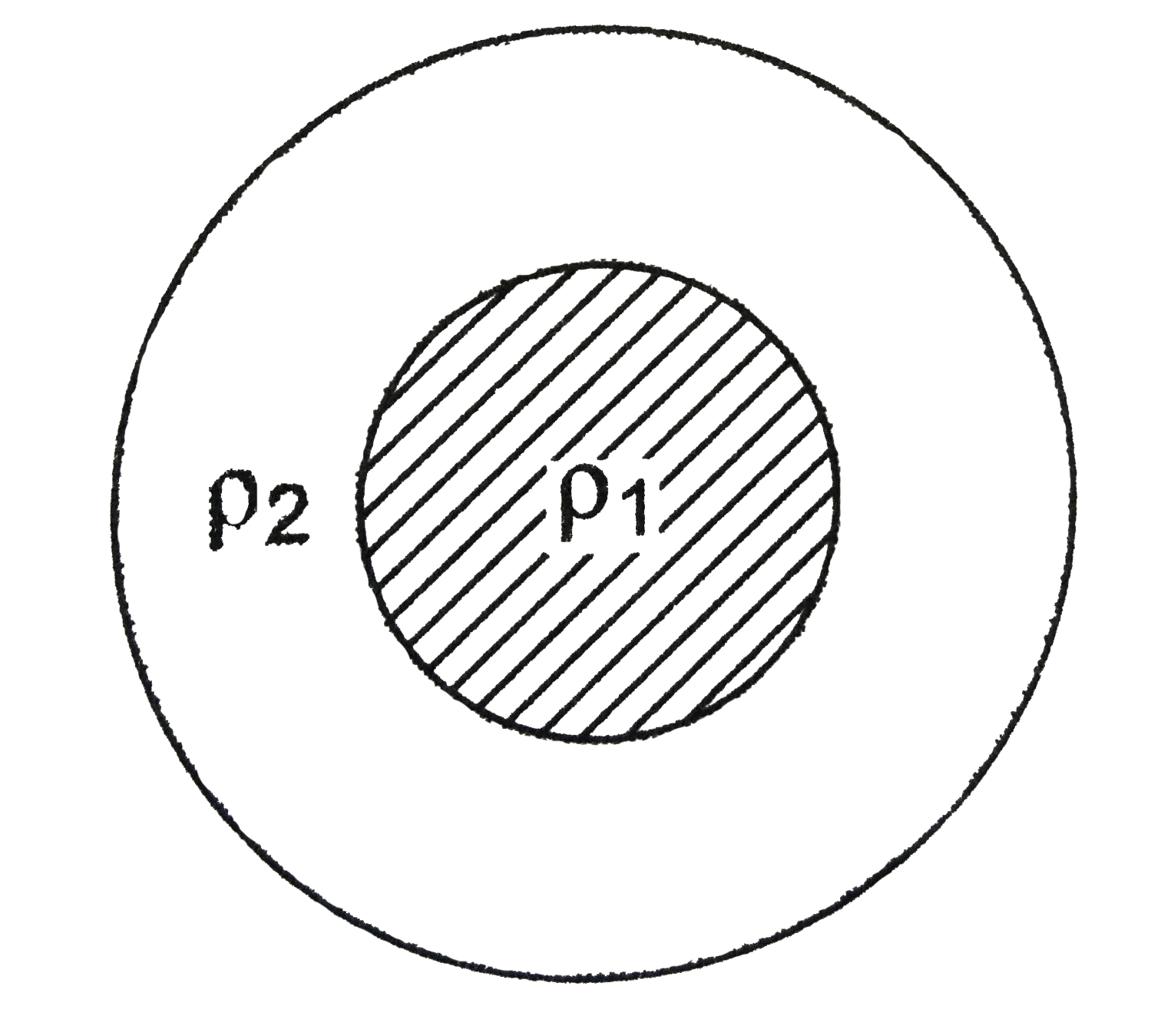Suppose there are two planets, 1 and 2, having the same density but their radii are R1andR2 respectively, where R1>R2. The accelerations due to gravity on the surface of these planets are related as
g1>g2
g1<g2
g1=g2
Can't say anything
The correct Answer is:A
To solve the problem of comparing the accelerations due to gravity on the surfaces of two planets with the same density but different radii, we can follow these steps:
1. Understanding the Formula for Acceleration Due to Gravity:
The acceleration due to gravity g on the surface of a planet is given by the formula:
g=GMR2
where:
- G is the universal gravitational constant,
- M is the mass of the planet,
- R is the radius of the planet.
2. Expressing Mass in Terms of Density:
The mass M of a planet can be expressed in terms of its density ρ and volume V:
M=ρV
For a spherical planet, the volume V is given by:
V=43πR3
Therefore, the mass can be rewritten as:
M=ρ(43πR3)
3. Substituting Mass into the Gravity Formula:
Substituting the expression for mass into the formula for g:
g=G(ρ43πR3)R2
Simplifying this gives:
g=43πGρR
4. Comparing the Accelerations on Both Planets:
Let’s denote the accelerations due to gravity on planets 1 and 2 as g1 and g2 respectively. Then we have:
g1=43πGρR1
g2=43πGρR2
5. Finding the Relationship Between g1 and g2:
Since both planets have the same density ρ and the same constant factors 43πG, we can compare g1 and g2:
g1g2=R1R2
Given that R1>R2, it follows that:
g1>g2
Conclusion:
Thus, the relationship between the accelerations due to gravity on the surfaces of the two planets is:
g1>g2
The acceleration due to gravity g on the surface of a planet is given by the formula:
g=GMR2
where:
- G is the universal gravitational constant,
- M is the mass of the planet,
- R is the radius of the planet.
The mass M of a planet can be expressed in terms of its density ρ and volume V:
M=ρV
For a spherical planet, the volume V is given by:
V=43πR3
Therefore, the mass can be rewritten as:
M=ρ(43πR3)
Substituting the expression for mass into the formula for g:
g=G(ρ43πR3)R2
Simplifying this gives:
g=43πGρR
Let’s denote the accelerations due to gravity on planets 1 and 2 as g1 and g2 respectively. Then we have:
g1=43πGρR1
g2=43πGρR2
Since both planets have the same density ρ and the same constant factors 43πG, we can compare g1 and g2:
g1g2=R1R2
Given that R1>R2, it follows that:
g1>g2
Thus, the relationship between the accelerations due to gravity on the surfaces of the two planets is:
g1>g2
Topper's Solved these Questions
Similar Questions
The density of the core a planet is ρ1 and that of the outer shell is ρ2. The radii of the core and that of the planet are R and 2R respectively. The acceleration due to gravity at the surface of the planet is same as at a depth R. Find the radio of ρ1ρ2

View SolutionThe radii of two planets are respectively R1andR2 and their densities are respectively ρ1andρ2.The ratio of the accelerations due to gravity at their surface is
View Solution
Knowledge Check
Two planets A and B have the same averge density . Their radii RAandRB are such that RA:RB=3:1. If gA and gB are the acceleration due to gravity at the surfaces of the planets, the gA:gB equals
A3:1B1:3C1:9D√3:1Two plants A and B have the same average density . Their radii RAandRB are such that RA:RB=3:1 . If gAandgB are the acceleration due to gravity at the surface of the planets , the gA:gB equals
A3:1B1:3C1:9D√3:1Two planets have the same average density but their radii are R1 and R2. If acceleration due to gravity on these planets be g1 and g2 respectively, then
Ag1g2=R1R2Bg1g2=R2R1Cg1g2=R21R22Dg1g2=R31R32
Two planets have radii r1andr2 and densities d1andd2 respectively. Then the ratio of acceleration due to gravity on them is
View SolutionThe acceleration due to gravity near the surface of a planet of radius R and density d is proportional to
View SolutionThe acceleration due to gravity near the surface of a planet of radius R and density d is proportional to
View SolutionThe acceleration due to gravity near the surface of a planet of radius R and density d is proportional to
View SolutionThe radii of two planets are respectively R1andR2 and their densities are respectively ρ1andρ2.The ratio of the accelerations due to gravity at their surface is
View Solution
